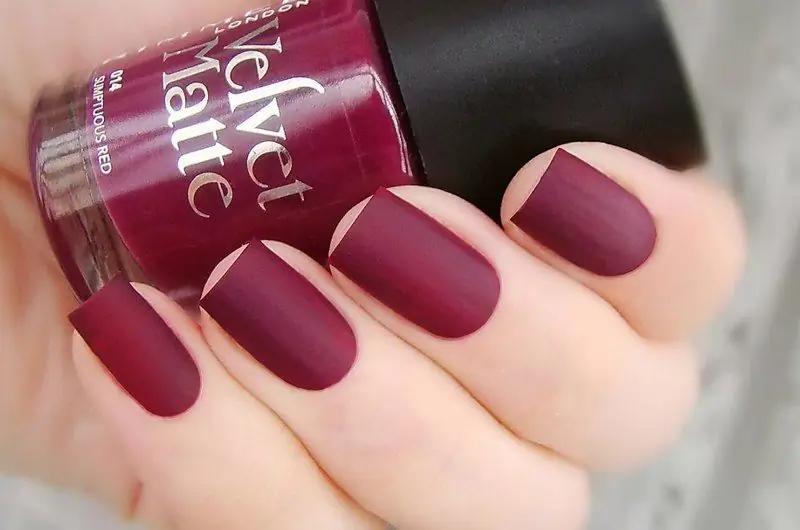
Table of contents:
- Author Bailey Albertson [email protected].
- Public 2023-12-17 12:53.
- Last modified 2025-01-23 12:41.
7 plants that desperately need autumn pruning, but many forget about it

Pruning in the fall is key to the maintenance of many flowers and shrubs. It helps prepare crops for wintering, facilitates harvesting, and creates conditions for proper growth and flowering.
Blackberry

Pruning is carried out in two stages: after the end of fruiting and before wintering. It is necessary to thin out the shrub, reduce the length of the main branches, get rid of dry, broken and diseased shoots that are not able to survive frost and can rot.
Thorny varieties require crown thinning and pruning of basal shoots to a height of 1.2 m. In thornless species, they only equal the crown.
rose flower

Roses should be pruned in the second half of autumn at night temperatures ranging from -5 to 0 ° C.
Basic principles:
- leave 5-7 healthy shoots. Old and damaged stems and branches in the center of the shrub are disposed of. The root growth is removed;
- the shoot is harvested 5 mm above the bud at an angle of 45 °;
- lashes of curly roses are formed horizontally, evenly cutting off all unnecessary from all sides;
- in faded and crooked stems (ground cover varieties), only powerful branches no more than 15 cm high are left.
You can try to root the shoots at home. With proper care in the spring, they will be an excellent planting material.
Hydrangea

Treelike hydrangea is characterized by the presence of many processes. She needs all types of pruning: sanitary, thinning, rejuvenating. Dried inflorescences, damaged and lifeless shoots, branches over four years old are removed from the shrub, all the shoots are cleaned inside the crown.
When caring for a large-leaved hydrangea, it must be borne in mind that its flowering shoots are formed in the upper part of the bush next to last year's branches. Therefore, only the lower tier is cut off.
Raspberries

In autumn, on ordinary raspberries, last year's branches are removed at the root. Cut dry, weak and painful annual shoots, leaving 6-10 pieces.
Repaired varieties bear fruit both on old and young branches. In warm regions, after the second wave of berry ripening, such raspberries are relieved of only two-year-old shoots.
In cold regions, to obtain one bountiful summer harvest, processing is carried out as with ordinary raspberries.
Gooseberry

A feature of the gooseberry is the annual formation of a huge number of young shoots. Autumn pruning eliminates unnecessary thorny branches, due to which the immunity of the shrub is weakened. In addition, heavy thickening negatively affects yield.
You should also control the growth of the bush and remove shoots less than 8 cm long. Zero shoots should be cut off by a quarter of the length. All sections are made 1 cm above the strong kidney.
Currant

In order for young shoots to receive an even amount of sunlight, it is necessary to form a bush by removing old, broken and dry branches. The procedure should be carried out at the end of the growing season.
General algorithm of actions:
- remove old and diseased branches to soil level;
- cut off the shoots lying on the ground;
- remove branches older than two years;
- thin out the shrub;
- cut off the dried tops of "living" branches to the nearest strong bud.
Juniper

Juniper has the ability to grow rapidly. To preserve decorativeness, a topiary trimming type is used. According to some experts, it is not worth forming the bushes in the fall: they will not have time to get stronger until the end.
The shrub must be sprayed with water before cutting. In healthy shoots, it is recommended to cut (obliquely) no more than a third of the top. For a speedy recovery, the sections are treated with special growth stimulants or copper sulfate.
Recommended:
Felt Cherries: Popular Varieties, Features Of Planting, Care, Pruning And Reproduction With Photos And Videos

Felt cherry: features and differences from ordinary. Description of popular varieties. Planting and leaving. Gardeners reviews
Pruning Old Grapes In Spring - Video, Tips For Beginners How To Do It Right

Step-by-step recommendations for pruning old grape bushes in the spring. Schemes and their detailed descriptions
Spring Rose Care: When To Open, Pruning And Feeding

Caring for garden roses in spring: when to open after winter, how to cut correctly, top dressing and other nuances. Photos and videos on the topic
Pruning Raspberries In Spring: When And How To Do It Right

The pros and cons of spring raspberry pruning when to do it. Instructions for pruning remontant and regular raspberries. Shrub care after pruning. Photo
Manicure Autumn - Fashionable Autumn Trends In Nail Design And Photos Of Beautiful New Products

What fashion trends are relevant in manicure in the fall of 2019 What techniques should be used. Various styles, colors and other nuances
